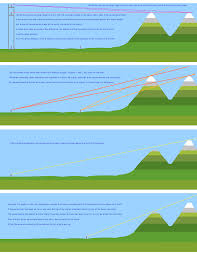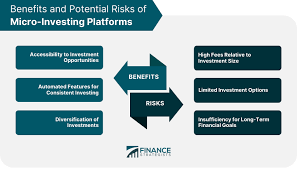We will use examples to understand what a market niche is, what the advantage of a niche business is, and what metrics are best to check before entering the marketplace.
What is a market niche?
Types of market niches
Main characteristics
Advantages of a Niche Business
How to choose your niche
Possible mistakes when choosing a niche
Expert advice
What is a market niche?
Table of Contents
A market niche is a part of the market that a seller deals with. In the professional environment, a niche is most often understood as a specific category of goods – for example, “children’s clothing”, “dry cat food”, “Christmas decorations”, “chocolate”.
A market niche is a narrow direction for satisfying the demand of a specific audience. It can be imagined as a free seat on a bus full of people. In one niche, as well as on one free seat, one seller can comfortably sit.
Sellers usually mean a niche as a segment or a general category as a whole: “children’s clothing”, “costumes for Chihuahuas”, “winter costumes for cats”.
In the course “Marketplace Manager” students learn to analyze different platforms, find suitable product niches and create sales cards. The course takes about 15 hours a week – you can combine it with work, training and personal life.
Read Also:Calories To lose weight: Quick Guide
Types of market niches
On popular marketplaces, a niche is a product category, which means that for sellers, a niche is a category. Here are some examples of such niches:
1.● bed linen;
2.● sports nutrition;
3.● cycling clothing;
4.● mixers;
5.● children’s clothing;
6.● rocking chairs;
7.● cat food.
If a seller sells copybooks for first-graders, he does not deal with all school products at once – only copybooks. In other words, he has occupied a narrow niche and offers his product not to all 34 million parents of schoolchildren, but only to 4 million of those who have first-graders. Parents of 9th-11th grade graduates are not his target audience, this is a different niche product , for example, “graduation products”, “festive ribbons”.
Main characteristics
A market niche implies a narrow specialization and has the following characteristics:
● The volume of money in a niche
to evaluate it, they look at the turnover and the number of sales.
● Growing or falling
you need to look at the graph from year to year: is the sales volume increasing or falling.
● The niche is occupied or free
We look at how crowded the niche is, how many other sellers are there. If we go back to the example with the bus, we check if there are free seats, and if so, where.
● Marketplace fees by niche
how much money you will have to give to the marketplace. The platforms set different commissions depending on the direction: for example, Ozon takes 9.5% for selling an item from the “Pet food” category, 18% for sports goods, and 19.5% for clothing. You can check the fees and see the rules of a specific platform on a specialized platform for the seller — for example, for Ozon it is Ozon Seller .
● Average buyout percentage for a product
how often specific items in a niche are bought out.
● Remaining stock from suppliers
A niche may be interesting in terms of numbers, but it will not work if suppliers do not have the product, or do not have enough, or only sell it in very large volumes. For example, if a seller plans to purchase 200-300 items per month, and suppliers offer favorable options only when purchasing batches of 2,000 items.
● Seasonality of goods
If the seller sells school bags, they are more often bought in the summer closer to September and less often during the rest of the year. The same applies to garden goods, New Year’s decorations, gifts for the Eighth of March.
Advantages of a Niche Business
We have collected the advantages of working with niche products.
✅ Low competition
It is easier for the seller to compete with other sellers, he will spend fewer resources on entering the market and promoting the range. At the same time, the goods will attract more attention from potential buyers due to the narrowness of the niche. For example, it is difficult not to notice a new seller among three old ones in the niche of “festive costumes for hamsters“, and in the niche of “children’s clothing” the competition will be much higher.
✅ Less resource consumption
When a vender possesses one particular specialty, he can amass a little group and spend less assets on work. At the same time, he has the opportunity to get rebates from providers, since he routinely buys the same products in expansive amounts.
✅ More traffic
With a limited budget, the seller will get more reviews for their products because they sell more of them than anyone else. The maximum number of reviews allows the seller’s cards to rise higher. Accordingly, potential buyers will trust them more. Competition on marketplaces occurs mainly between cards, not between stores.
How to choose your niche
In order for a novice seller, individual entrepreneur or company to choose their niche on the marketplace, they need to do the following:
1. Analyze niches that are interesting to you
clearly define the needs of the target audience and the level of competition. The easiest way to do this is with the help of marketplace analytics services , such as MPSTATS, Mayak (Mayak) or Moneyplace. They will help you analyze the niche and find out which product is in demand, what the sales level is and how many potential competitors are already working in the niche. 2. Choose a niche with low or minimal competition.
3. Decide on a price segment
depending on your own financial capabilities and the needs of the target audience .
4. Make sure that it is possible to ensure the supply of goods
the goods are available in the required quantity from suppliers and there is money to maintain the necessary balance in warehouses for work.
5. Consider seasonality in the niche if it significantly affects sales
Think about how to play on seasonal surges of interest in certain product categories. For example, some sellers work specifically on combinations of seasonal trends: for the New Year they sell toys, decorations and garlands, and for the summer – beach accessories, children’s pools.
Taking a narrow market niche is a strategy of working in depth. If a seller has a narrow range of products, he immediately takes or strives to take a leading position in the niche, because the higher the product card, the more traffic, including free traffic, it receives. There is another strategy, when a seller works in several niches, selling a wide range of products, but takes average positions everywhere. The choice of strategy is up to the seller, the main thing is to quickly respond to changes in the market.
Read Also:Health Insurance Marketplace: Quick Overview
Possible mistakes when choosing a niche
Here are the most common mistakes sellers can make when choosing a niche.
❌ Choose a niche based on personal preferences
When choosing a niche, you should be guided by analytics, not personal preferences. Niche products do not always match the needs of buyers: perhaps they are not on sale because there is no demand for them, and not because no one has thought of selling them. For example, a person wanted to order an unusual collar for his dog, did not find it on the marketplace and decided: “I will sell accessories for animals.” At the same time, he did not take into account that few people need such a collar.
❌ Do not take into account competitors
If there is a seller in a niche with a market share of more than 30%, a newcomer will most likely not be able to displace him and take his place. For example, in the analytics service, the seller sees that in the niche of cat feeders there is a seller who sells 34% of all bowls. An attempt to break through with a similar product in the same price segment will most likely not bring success. If there are, say, 100 sellers in a niche and each has 2-3% of total sales, you can enter the niche and try to become a leader.
❌ Do not check the remaining goods from suppliers
Let’s say the seller has chosen a product and purchased the first batch, sales are going well, but he did not specify whether these products will still be available from suppliers. As a result, there is demand, but there is no opportunity to purchase the product. The seller is forced to agree to an alternative, but this product is no longer sold: cards are lowered in the issue, sales and revenue fall.
❌ Incorrectly calculating the business model, not doing calculations, overstating the figures
For example, not taking into account the marketplace commission and interest on the purchase of goods, or initially setting higher interest rates. This happens when the seller is sure that his goods will definitely be purchased at least 70-80%. At the same time, he does not take into account that the average purchase of a similar product is only 30%, that is, 7 out of 10 items will return to him – and this is additional logistics costs. Also, novice sellers often do not take into account the advertising and promotion budget in their expenses, without which it is difficult to achieve stable sales.
❌ Enter seasonal niches out of season
You need to prepare for the season in advance, and not at the moment when it has already begun. For example, the summer season begins on marketplaces in April – it is too late to upload cards in June, for the most part, buyers have already ordered everything they need. The same applies to New Year’s products – you need to prepare the goods and issue cards in September, and not at the beginning of December.











